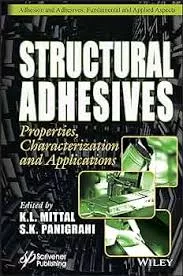Ask Dr. Dave
Understanding Two-Component Adhesives
Why do we have to use two-component adhesives and meter/mix equipment in our assembly and repair operations?
I realize that the meter/mix equipment can be a major inconvenience. Adhesives come in two forms, namely two component or one component. Two-component adhesives are mainly epoxies, reactive acrylics, or polyurethanes. Customers turn to two-component adhesives because they cure very quickly at room temperature and they can fill large gaps. However, customers often use these adhesives due to necessity rather than by choice.
Solvent- or water-based adhesives can be used, but they have obvious disadvantages such as the necessity for drying or hazards such as flammability or health hazards. Most other one-component adhesives require an external chemical or energy source to initiate curing. These one-component adhesives include: hot melts, which must be heated; reactive hot-melt urethanes, which require heat plus atmospheric moisture for curing; and heat-cured epoxies. Last but not least are UV- or visible light-cured adhesives that allow very fast curing but always require one substrate to be transparent to the radiation.
The only true one-component adhesives are silicones, polyurethanes, cyanoacrylates, and anaerobic methacrylates. Silicone and polyurethane systems rely on atmospheric moisture diffusing into the adhesive bondline from the outside; they tend to cure quite slowly for this reason.
Cyanoacrylates or anaerobics adhesives rely on surface moisture and metal surfaces, respectively, to initiate the curing and can cure very quickly. These are obviously a possible adhesive for you. They do tend to be expensive if you are bonding large areas, and they are limited to bond gaps of around 20 mils unless you use a surface primer.
Any views or opinions expressed in this column are those of the author and do not represent those of ASI, its staff, Editorial Advisory Board, or BNP Media.
Looking for a reprint of this article?
From high-res PDFs to custom plaques, order your copy today!






